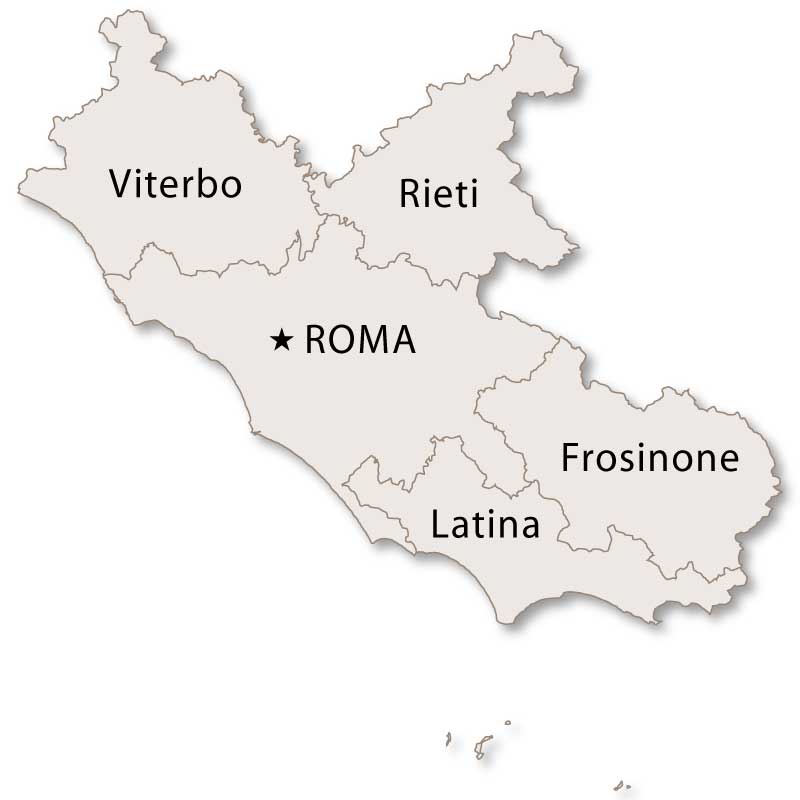
The province of Frosinone is located in the Lazio region of central Italy, stretching from the rolling hills of the Apennines to the edges of the Roman countryside. This province is often overlooked by international travelers, yet it holds a wealth of cultural heritage, natural beauty, and historic significance.
Known as the gateway to Ciociaria, an area rich with ancient traditions and rural charm, Frosinone province is a land of contrasts. It blends rugged mountain villages with fertile valleys, medieval abbeys with Roman ruins, and quiet countryside with vibrant local life.

Frosinone province has a deep-rooted history that predates Roman times, originally inhabited by the Volsci, an ancient Italic tribe. With the spread of Roman influence, towns such as Anagni, Ferentino, and Alatri became crucial centers of religion and commerce.
During the Middle Ages, the province gained prominence through its religious institutions, especially the powerful Abbey of Montecassino. This area nurtured a strong spiritual tradition and gave rise to unique forms of art, dialect, and architecture still visible today.
The province offers a diverse and breathtaking natural landscape. The Apennine mountains provide an impressive backdrop and offer opportunities for hiking, skiing, and nature observation. One of the most remarkable protected areas is the Abruzzo, Lazio and Molise National Park, part of which lies within the provincial borders.
Further south, the Valle di Comino stretches across green hills and is dotted with olive groves, vineyards, and charming small towns. Rivers like the Liri and Fibreno add to the area’s ecological richness and have given rise to tranquil nature reserves that attract birdwatchers and kayakers.
Each town in Frosinone province offers a distinct character and story. Anagni, often called the City of Popes, was a favored residence of medieval pontiffs and boasts a magnificent Romanesque cathedral with a crypt known as the Sistine Chapel of the Middle Ages. Ferentino and Alatri are famous for their ancient cyclopean walls and acropolises, remnants of their pre-Roman heritage.
Sora and Isola del Liri bring a unique charm with rivers and waterfalls right in the town centers, especially the Cascata Grande in Isola del Liri, a rare waterfall flowing through an urban area. Fiuggi is internationally known for its thermal waters and has been a spa destination for centuries, attracting everyone from Roman emperors to modern wellness tourists.
The Abbey of Montecassino stands as one of Europe’s most significant religious landmarks. Founded by Saint Benedict in 529 AD, it has been a beacon of learning and monastic life for centuries. Though destroyed and rebuilt multiple times, it remains a symbol of resilience and faith.
Other spiritual landmarks include the Abbey of Casamari, a Cistercian masterpiece of Gothic architecture, and the Sanctuary of Canneto hidden deep in the mountains. These sites are not just pilgrimage destinations, but also places of architectural and artistic wonder.
Frosinone province is a haven for lovers of traditional Italian cuisine. Its rural roots shine through in its dishes, many of which are based on local produce, meats, and cheeses. Dishes such as “sagne e fagioli,” a handmade pasta with beans, and “ciambelle al vino,” a local wine biscuit, reflect the simplicity and authenticity of the area’s food culture.
The province is also known for its wines and olive oil, especially from the area around Piglio, which produces Cesanese del Piglio DOCG, a robust red wine with a centuries-old reputation. Local markets and festivals offer perfect opportunities to experience these tastes firsthand.
Frosinone province celebrates a rich calendar of festivals that showcase its deep-rooted traditions. From religious processions to harvest festivals, each event is an explosion of color, music, and local pride. One of the most famous is the Infiorata in Alatri, where streets are carpeted in intricate flower patterns during Corpus Domini.
Folk music and dances, such as the saltarello, remain integral to cultural life, often accompanied by traditional costumes and storytelling. Many towns have their own unique events tied to their history or patron saints, creating an engaging and authentic atmosphere for visitors.
Artisans in Frosinone province continue to practice time-honored crafts such as ceramics, wood carving, and textile weaving. These skills have been passed down through generations and are still visible in local workshops and boutiques, especially in the smaller mountain villages.
Ciociaria, the cultural region that includes Frosinone, is particularly famous for its handmade leather sandals called ciocie. These were traditionally worn by shepherds and farmers and are now celebrated as a symbol of local identity and craftsmanship.
For nature lovers and active travelers, Frosinone province offers a wide range of outdoor activities. Hiking routes traverse the mountains, and there are trails through forests, pastures, and ancient ruins. In winter, ski resorts such as Campocatino offer snow sports in a family-friendly setting.
Sustainable tourism is growing in the region, with agriturismos and eco-lodges offering immersive stays on farms and vineyards. These experiences not only provide relaxation but also educate visitors about rural life and conservation efforts in the area.
Frosinone province is well-connected by road and rail, lying roughly halfway between Rome and Naples. The city of Frosinone itself is reachable via the A1 motorway or by train from Rome Termini, making it an excellent base for exploring the surrounding countryside.
The best times to visit are spring and early autumn, when the weather is mild and the landscapes are at their most vibrant. Summer can be warm, especially in the valleys, while winter provides opportunities for mountain sports and cozy getaways in hilltop villages.
The province of Frosinone is a treasure trove for those seeking an authentic and varied Italian experience. It blends untouched landscapes with rich history and genuine hospitality, offering something for every type of traveler.
Whether you are interested in ancient history, religious art, mountain adventures, or culinary delights, this often-overlooked corner of Lazio promises rewarding and unforgettable discoveries. Make time for Frosinone province and uncover one of Italy’s best-kept secrets.

More Details



